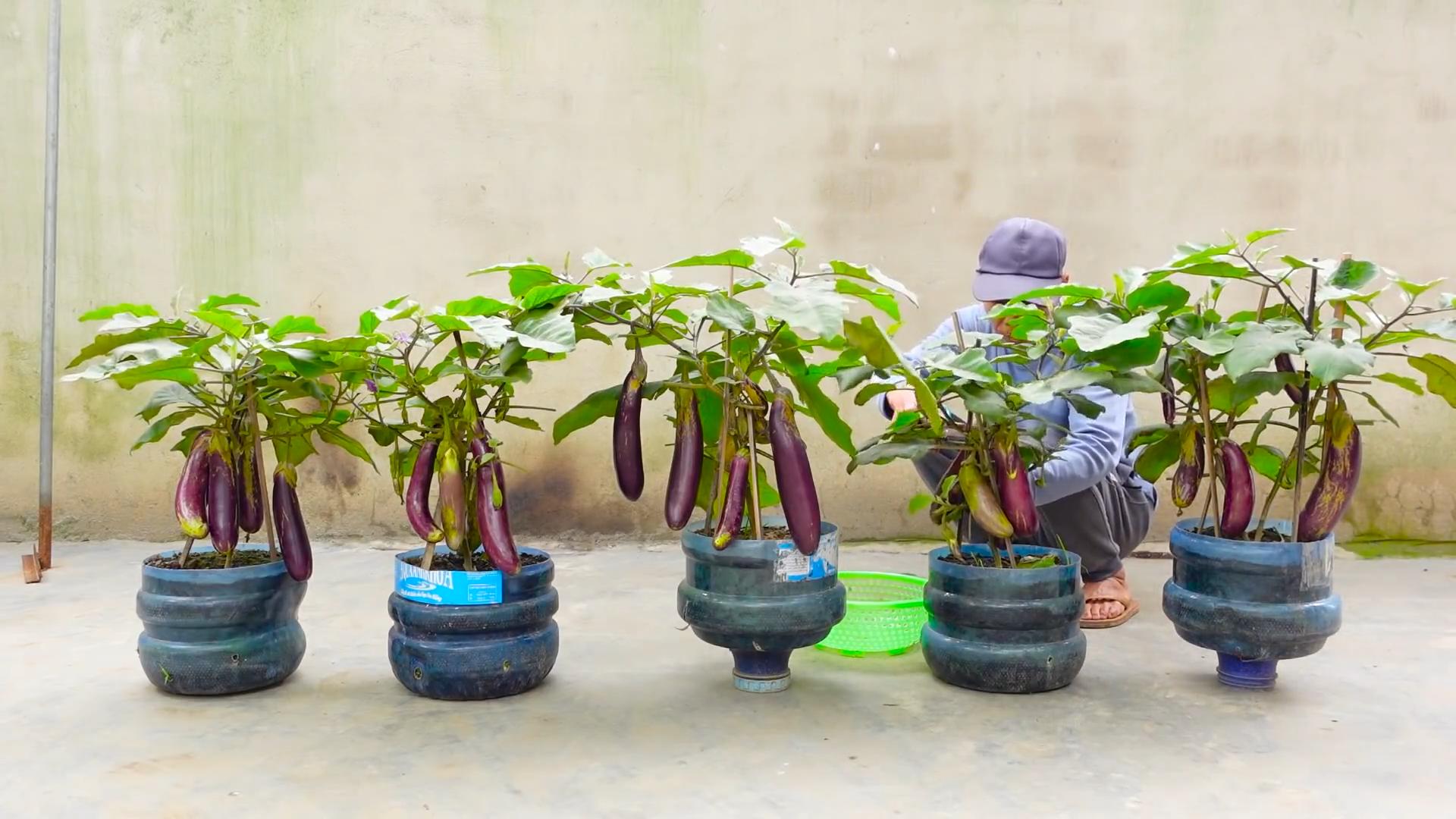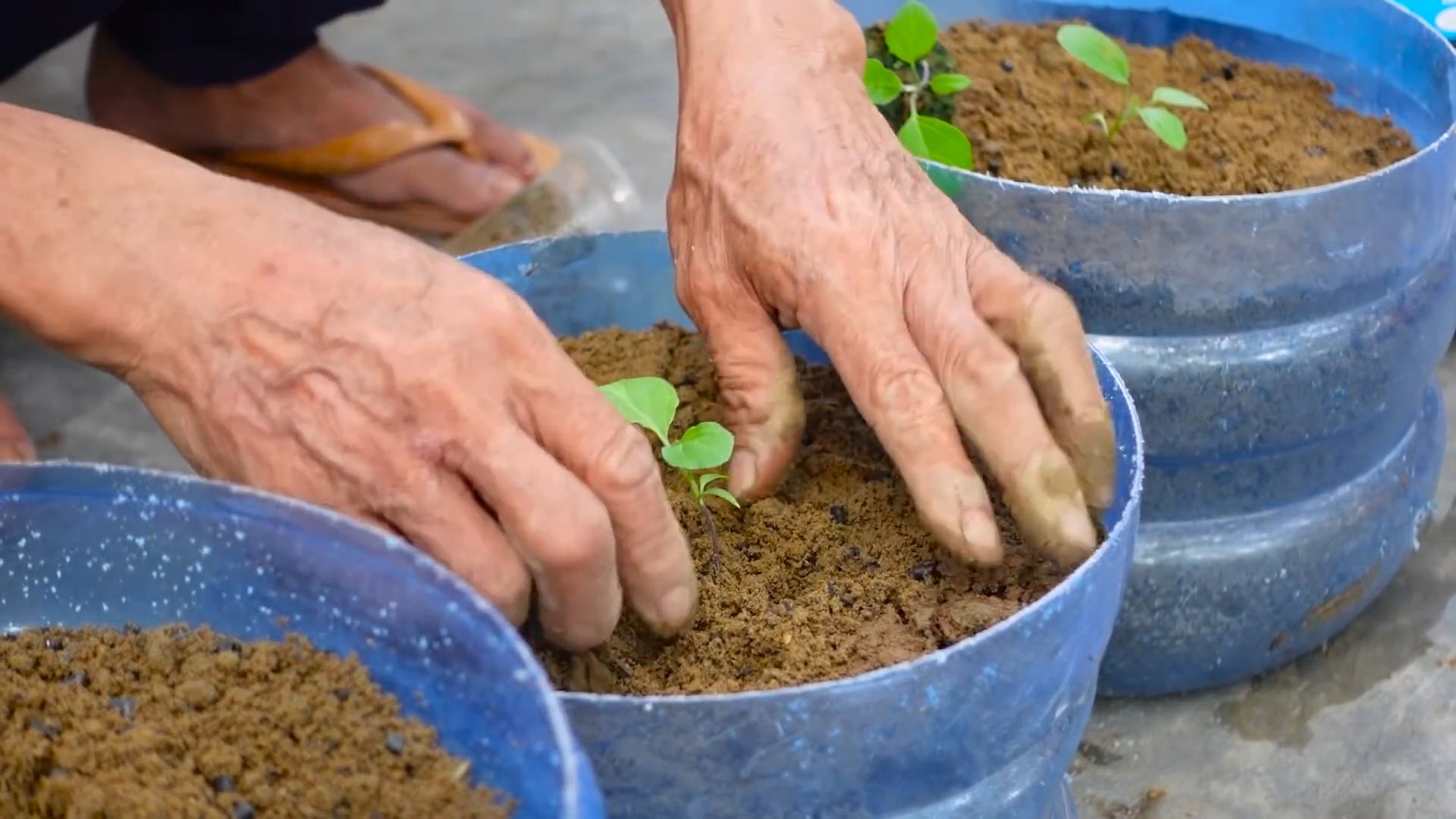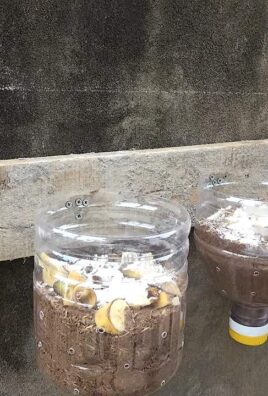Indoor fruit growing might sound like something out of a futuristic sci-fi movie, but trust me, it’s totally achievable and incredibly rewarding! Imagine plucking a ripe strawberry from a plant on your windowsill in the middle of winter, or enjoying a freshly squeezed lemon from your own indoor citrus tree. Sounds dreamy, right?
For centuries, people have sought ways to cultivate plants indoors, from the elaborate orangeries of European royalty to the simple herb gardens gracing kitchen windowsills. This desire to bring the outdoors in speaks to our innate connection with nature and our longing for fresh, homegrown goodness, regardless of the season or our living space.
In today’s fast-paced world, many of us lack the time or space for a traditional garden. That’s where the magic of indoor fruit growing comes in! This DIY guide is packed with simple, effective tricks and hacks to help you cultivate your own miniature orchard, no matter how small your apartment or how limited your gardening experience. We’ll explore everything from choosing the right varieties and containers to mastering the art of indoor pollination and pest control. So, get ready to unleash your inner green thumb and transform your home into a thriving, fruitful oasis!

Growing Your Own Indoor Oasis: A Guide to Indoor Fruit Gardening
Hey there, fellow plant enthusiasts! Ever dreamt of picking fresh fruit right from your living room? Well, dream no more! Growing fruit indoors is totally achievable, and I’m here to walk you through the process. It’s easier than you might think, and the reward of homegrown goodness is absolutely worth it. Let’s get started!
Choosing the Right Fruits for Indoor Growing
Not all fruits are created equal when it comes to indoor cultivation. Some are simply better suited to the confined spaces and controlled environments we can provide indoors. Here are some of my top recommendations:
* Dwarf Citrus Trees: Think lemons, limes, oranges, and mandarins. These are popular choices because they’re relatively compact and produce fragrant blossoms and delicious fruit. Look for varieties specifically labeled as “dwarf” or “indoor.”
* Strawberries: These are surprisingly easy to grow indoors, especially in hanging baskets or containers. Everbearing varieties will give you a continuous harvest throughout the growing season.
* Figs: Certain fig varieties, like the ‘Brown Turkey’ or ‘Fiddle Leaf Fig’ are well-suited for indoor growing. They can get quite large, so be prepared to provide ample space.
* Blueberries: While a bit more challenging, blueberries can thrive indoors with the right conditions. Choose self-pollinating varieties and ensure acidic soil.
* Avocados: Growing an avocado from a pit is a fun experiment, although it may take several years to produce fruit. It’s more of a long-term project, but definitely rewarding!
Essential Supplies You’ll Need
Before we dive into the planting process, let’s gather all the necessary supplies. Having everything on hand will make the whole experience much smoother.
* Containers: Choose pots that are appropriately sized for the type of fruit you’re growing. Make sure they have drainage holes to prevent waterlogging. Terra cotta pots are a great option as they allow the soil to breathe.
* Potting Mix: Use a high-quality potting mix specifically formulated for containers. Avoid using garden soil, as it can compact and hinder drainage. For blueberries, you’ll need an acidic potting mix.
* Grow Lights: Indoor fruit trees need plenty of light to thrive. If you don’t have a sunny south-facing window, invest in a good set of grow lights. LED grow lights are energy-efficient and provide the full spectrum of light that plants need.
* Fertilizer: Use a balanced fertilizer specifically formulated for fruit trees or plants. Follow the instructions on the label carefully to avoid over-fertilizing.
* Watering Can or Hose: A watering can with a long spout is ideal for reaching the soil without wetting the foliage.
* Pruning Shears: Sharp pruning shears are essential for shaping your fruit trees and removing dead or diseased branches.
* Spray Bottle: A spray bottle is useful for misting your plants to increase humidity.
* pH Meter (Optional): If you’re growing blueberries, a pH meter can help you monitor the acidity of the soil.
Step-by-Step Planting Guide
Alright, let’s get our hands dirty! Here’s a detailed guide to planting your chosen fruit trees or plants indoors.
1. Preparing Your Container
* Choose the Right Size: Select a container that’s appropriately sized for your plant. For dwarf citrus trees, a 12-14 inch pot is a good starting point. For strawberries, hanging baskets or smaller pots work well.
* Ensure Drainage: Make sure your container has adequate drainage holes. If not, drill a few extra holes in the bottom.
* Add Drainage Layer (Optional): You can add a layer of gravel or pebbles at the bottom of the pot to improve drainage, but it’s not strictly necessary.
* Fill with Potting Mix: Fill the container with your chosen potting mix, leaving a few inches of space at the top.
2. Planting Your Fruit Tree or Plant
* Gently Remove from Nursery Pot: Carefully remove your fruit tree or plant from its nursery pot. Gently loosen the roots if they’re tightly bound.
* Position in the Container: Place the plant in the center of the container, making sure the top of the root ball is level with the surrounding soil.
* Fill with Soil: Fill in the remaining space around the root ball with potting mix, gently pressing down to eliminate air pockets.
* Water Thoroughly: Water the plant thoroughly until water drains out of the drainage holes.
3. Providing the Right Environment
* Light: Place your plant in a location that receives at least 6-8 hours of direct sunlight per day. If you don’t have enough natural light, supplement with grow lights. Position the grow lights a few inches above the plant.
* Temperature: Most fruit trees and plants prefer temperatures between 65-75°F (18-24°C). Avoid placing them near drafts or heating vents.
* Humidity: Indoor air can be dry, especially during the winter months. Increase humidity by misting your plants regularly, using a humidifier, or placing the pots on trays filled with pebbles and water.
* Air Circulation: Good air circulation is important to prevent fungal diseases. Open a window occasionally or use a small fan to circulate the air.
Caring for Your Indoor Fruit Garden
Now that your fruit trees or plants are happily settled in their new homes, it’s time to learn how to care for them properly.
1. Watering
* Watering Frequency: Water your plants when the top inch of soil feels dry to the touch. Avoid overwatering, as this can lead to root rot.
* Watering Technique: Water thoroughly until water drains out of the drainage holes. Empty the saucer underneath the pot to prevent the plant from sitting in water.
* Water Quality: Use filtered or distilled water if your tap water is hard or contains high levels of chlorine.
2. Fertilizing
* Fertilizing Schedule: Fertilize your plants every 2-4 weeks during the growing season (spring and summer). Reduce or stop fertilizing during the dormant season (fall and winter).
* Fertilizer Type: Use a balanced fertilizer specifically formulated for fruit trees or plants. Follow the instructions on the label carefully.
* Application Method: Dilute the fertilizer with water according to the instructions and apply it to the soil around the base of the plant.
3. Pruning
* Pruning Purpose: Pruning helps to shape your fruit trees, remove dead or diseased branches, and encourage fruit production.
* Pruning Timing: Prune your plants in late winter or early spring, before new growth begins.
* Pruning Technique: Use sharp pruning shears to make clean cuts. Remove any dead, diseased, or crossing branches. Thin out the canopy to allow for better air circulation and light penetration.
4. Pollination
* Self-Pollinating vs. Cross-Pollinating: Some fruit trees, like dwarf citrus trees, are self-pollinating, meaning they can pollinate themselves. Others, like blueberries, may require cross-pollination from another variety.
* Hand-Pollination: If your fruit tree is not self-pollinating, you’ll need to hand-pollinate it. Use a small paintbrush to transfer pollen from one flower to another.
* Encouraging Pollination: You can also encourage pollination by placing your plants outdoors during the blooming season or using a small fan to circulate the air.
5. Pest and Disease Control
* Common Pests: Common pests that can affect indoor fruit trees include aphids, spider mites, and scale.
* Pest Control Methods: Inspect your plants regularly for pests. If you find any, treat them with insecticidal soap or neem oil.
* Common Diseases: Common diseases that can affect indoor fruit trees include fungal diseases like powdery mildew and root rot.
* Disease Prevention: Prevent diseases by providing good air circulation, avoiding overwatering, and using a well-draining potting mix.
Troubleshooting Common Issues
Even with the best care, you might encounter some challenges along the way. Here are some common issues and how to address them:
* Yellowing Leaves: Yellowing leaves can be caused by overwatering, underwatering, nutrient deficiencies, or pest infestations. Check the soil moisture, fertilize your plants, and inspect them for pests.
* Leaf Drop: Leaf drop can be caused by sudden changes in temperature, humidity, or light. Avoid placing your plants near drafts or heating vents.
* Lack of Fruit Production: Lack of fruit production can be caused by insufficient light, improper pollination, or nutrient deficiencies. Make sure your plants are getting enough light, hand-pollinate them if necessary, and fertilize them regularly.
* Root Rot: Root rot is caused by overwatering and poor drainage. Allow the soil to dry

Conclusion
So, there you have it! Embracing the world of indoor fruit growing isn’t just a fun project; it’s a pathway to fresh, flavorful produce right at your fingertips, regardless of the season or your outdoor space. We’ve explored the fundamental steps, from selecting the right varieties to providing optimal light and care. The beauty of this endeavor lies in its adaptability.
Why is this DIY trick a must-try? Because it empowers you to take control of your food source, reduce your reliance on store-bought options (often laden with pesticides and transported long distances), and experience the unparalleled satisfaction of nurturing life from seed to fruit. Imagine plucking a sun-ripened strawberry from your own indoor garden in the dead of winter, or adding a freshly squeezed lemon to your tea, grown just steps from your kitchen. The taste difference alone is worth the effort.
But the benefits extend beyond just flavor. Indoor fruit growing is a fantastic way to connect with nature, even when confined indoors. It’s a therapeutic activity that can reduce stress and improve your overall well-being. Plus, it’s a wonderful educational opportunity for children, teaching them about plant life cycles, responsibility, and the importance of healthy eating.
Don’t be afraid to experiment with variations! Try different types of containers, from traditional pots to self-watering planters. Explore hydroponic systems for a more advanced approach. Consider companion planting to enhance growth and deter pests naturally. For example, basil planted near your indoor strawberry plants can help repel aphids. You can also try different lighting solutions. While grow lights are ideal, you might find that a sunny windowsill supplemented with a simple fluorescent lamp works just fine, especially for less demanding fruits like dwarf citrus.
Remember, success in indoor fruit growing is a journey, not a destination. There will be challenges along the way, but don’t let them discourage you. Learn from your mistakes, adapt your techniques, and celebrate your successes. The rewards are well worth the effort.
We wholeheartedly encourage you to embark on your own indoor fruit growing adventure. Start small, perhaps with a single potted lemon tree or a few strawberry plants. As you gain experience and confidence, you can expand your indoor orchard.
And most importantly, we want to hear about your experiences! Share your tips, tricks, and triumphs in the comments below. What fruits are you growing indoors? What challenges have you faced, and how have you overcome them? Your insights can help inspire and guide other aspiring indoor gardeners. Let’s create a community of indoor fruit enthusiasts, sharing our knowledge and passion for growing fresh, delicious food within the comfort of our own homes. So, grab your seeds, potting mix, and a little bit of sunshine, and get ready to experience the joy of indoor fruit growing! We can’t wait to see what you create.
Frequently Asked Questions (FAQ)
What are the best fruits to grow indoors for beginners?
For beginners venturing into indoor fruit growing, certain varieties are more forgiving and easier to manage. Strawberries are an excellent choice, as they are relatively compact, produce fruit quickly, and thrive in containers. Dwarf citrus trees, such as lemons, limes, and oranges, are also popular options, offering fragrant blossoms and flavorful fruit. Herbs like mint and rosemary can be easily grown alongside your fruits to help with pest control. Consider starting with these before moving on to more demanding fruits. Blueberries, while requiring acidic soil, can also be successfully grown indoors with the right care.
How much light do indoor fruit trees need?
Light is crucial for successful indoor fruit growing. Most fruit trees require at least 6-8 hours of direct sunlight per day. If you don’t have a south-facing window that provides sufficient light, you’ll need to supplement with grow lights. LED grow lights are energy-efficient and provide the full spectrum of light that plants need to thrive. The distance between the grow light and the plant will depend on the intensity of the light; follow the manufacturer’s recommendations. Rotate your plants regularly to ensure even light exposure on all sides. Insufficient light can lead to poor fruit production and leggy growth.
What kind of soil is best for indoor fruit growing?
The ideal soil for indoor fruit growing is a well-draining potting mix that is rich in organic matter. Avoid using garden soil, as it can become compacted and doesn’t drain well in containers. A mix of peat moss, perlite, and vermiculite is a good starting point. You can also add compost or other organic amendments to improve the soil’s fertility and water retention. The specific soil requirements will vary depending on the type of fruit you’re growing. For example, blueberries require acidic soil, so you’ll need to amend the soil with peat moss or sulfur.
How often should I water my indoor fruit trees?
Watering frequency depends on several factors, including the type of fruit, the size of the container, the temperature, and the humidity. As a general rule, water when the top inch of soil feels dry to the touch. Avoid overwatering, as this can lead to root rot. Ensure that your containers have drainage holes to allow excess water to escape. During the growing season, you may need to water more frequently than during the dormant season. Check the soil moisture regularly and adjust your watering schedule accordingly.
How do I pollinate my indoor fruit trees?
Many indoor fruit trees are self-pollinating, meaning they don’t require another tree to produce fruit. However, even self-pollinating trees can benefit from hand-pollination. Use a small paintbrush or cotton swab to transfer pollen from the male parts (anthers) of the flower to the female part (stigma). You can also gently shake the tree to help distribute the pollen. For trees that are not self-pollinating, you’ll need to have two different varieties of the same fruit to ensure pollination.
What are some common pests and diseases that affect indoor fruit trees?
Common pests that can affect indoor fruit trees include aphids, spider mites, scale, and mealybugs. Regularly inspect your plants for signs of infestation, such as sticky residue, webbing, or distorted leaves. Treat infestations promptly with insecticidal soap, neem oil, or other organic pest control methods. Diseases such as powdery mildew and root rot can also affect indoor fruit trees. Ensure good air circulation and avoid overwatering to prevent these problems.
How do I fertilize my indoor fruit trees?
Indoor fruit trees require regular fertilization to provide them with the nutrients they need to grow and produce fruit. Use a balanced fertilizer that is specifically formulated for fruit trees. Follow the manufacturer’s instructions for application rates and frequency. Fertilize during the growing season, typically from spring to fall. Avoid fertilizing during the dormant season. You can also supplement with organic fertilizers such as compost tea or fish emulsion.
Can I grow fruit trees from seed indoors?
While it’s possible to grow fruit trees from seed indoors, it’s a long and challenging process. Fruit trees grown from seed may not produce fruit that is true to the parent plant, and it can take several years for them to mature and bear fruit. It’s generally easier and more reliable to purchase grafted fruit trees from a reputable nursery. Grafted trees are more likely to produce fruit that is true to type and will often bear fruit sooner than trees grown from seed.
How do I prune my indoor fruit trees?
Pruning is essential for maintaining the shape and health of your indoor fruit trees. Prune to remove dead, damaged, or diseased branches. Also, prune to improve air circulation and light penetration. The best time to prune is during the dormant season. Use sharp, clean pruning shears to make clean cuts. Avoid removing more than one-third of the tree’s foliage at any one time.
What is the ideal temperature and humidity for indoor fruit growing?
Most fruit trees thrive in temperatures between 65°F and 75°F (18°C and 24°C). Avoid exposing your plants to extreme temperature fluctuations. Humidity is also important, especially for tropical fruits. Aim for a humidity level of 40-60%. You can increase humidity by using a humidifier, placing a tray of water near the plants, or grouping plants together.





Leave a Comment